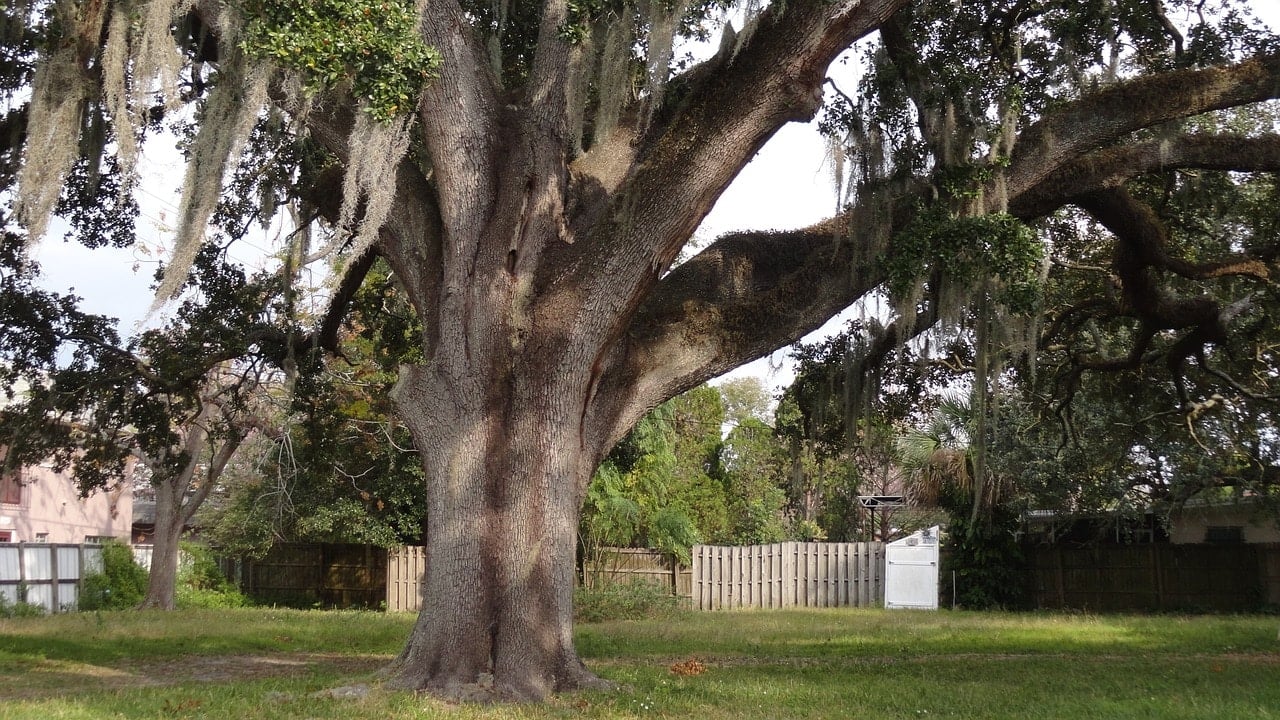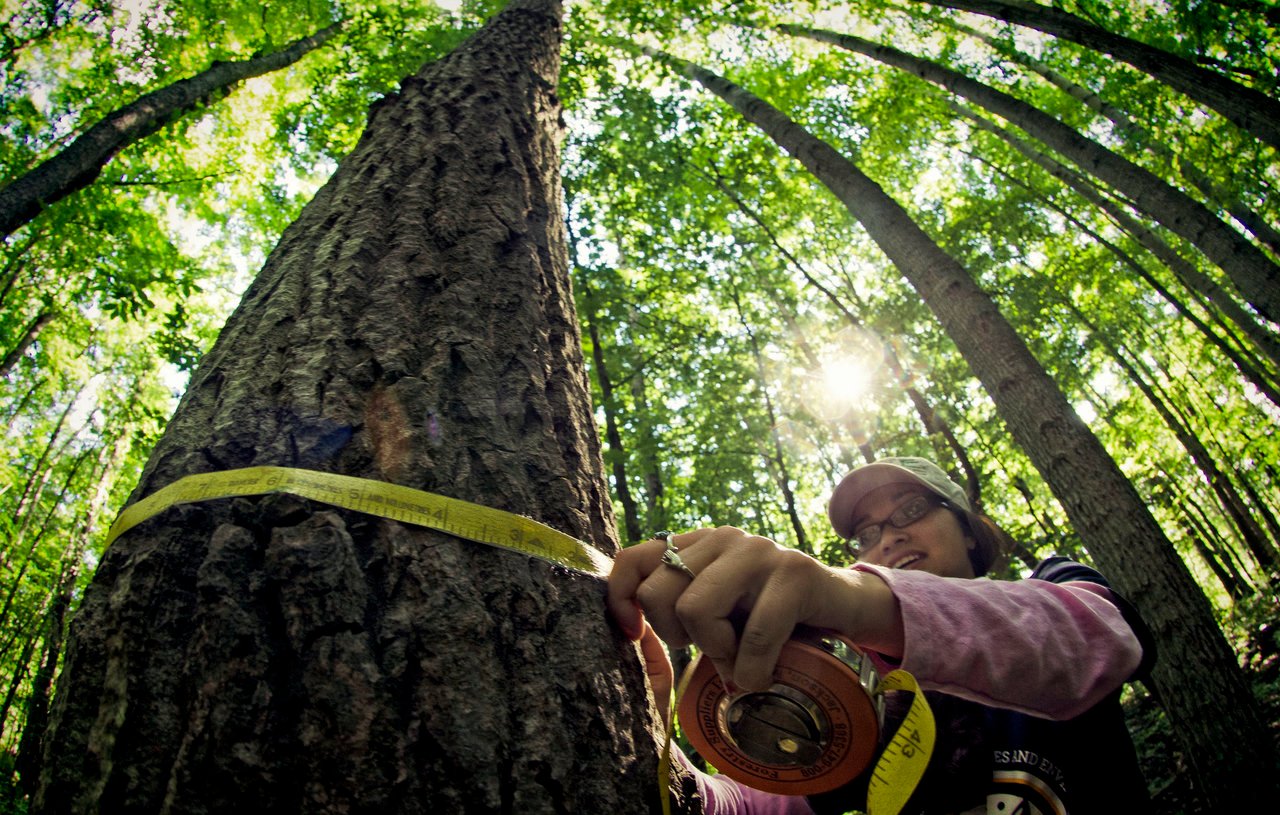
The towering oaks and majestic maples that provide shade and offer branches sturdy enough to support a swing require special care.
As trees mature, they direct more of their energy toward the maintenance of living tissue and less energy to lengthening limbs and roots or expanding girth,” explains David Mercker, Ph.D., an extension forester at the University of Tennessee. “Old trees aren’t focused on growth; they are focused on survival.”
When a tree is considered “old” depends on the tree species. Mercker points out that some sequoias on the West Coast have been around thousands of years while redbud trees on the East Coast might not live more than a few decades.
Mature trees, also called veteran trees or legacy trees in honor of their age, size and condition, not only have great aesthetic appeal, they provide important landscape benefits. Large trees do better than their younger sapling cousins to help conserve energy, reduce stormwater runoff, improve air quality and offer wildlife habitat. The U.S. Forest Service also estimates that healthy, mature trees can increase property values as much as 10 percent.
Mercker notes that veteran trees have withstood the test of time, adding, “Old trees know how to live; they have survived drought, heat, freezes and floods and adapted.”
Aging Tree Care Tips
Older trees need special care to thrive. To ensure that your mature trees continue to thrive, follow these maintenance tips:

Remove the grass: Your lawn competes with the tree roots for moisture and nutrients. Removing grass beneath the tree canopy redirects much-needed resources toward the tree, helping it thrive in its old age. Mercker suggests using a labeled herbicide to kill the grass or old-fashioned manual labor to remove a layer of sod.
Add mulch: Mulch helps retain moisture, suppresses weeds that compete with the tree for nutrients and encourages earthworm activity to improve soil health; it also helps loosen the soil, allowing the roots room to grow.
“If you look at the forest floor, it’s all mulch,” Mercker says.
The layer of mulch beneath the tree canopy should be between two and three inches deep and as wide as possible.
Test the soil: Contact your local university extension about soil testing. Mercker suggests that understanding the pH and balance of nutrients in your soil can help you make decisions about fertilizing veteran trees. Based on your test results, your extension agent can recommend changes to improve your soil condition. Adding organic matter is a common recommendation. A licensed arborist can also inject liquid fertilizer into your tree to address nutrient deficiencies.
Pay attention to pruning: Veteran trees start to abort their lower limbs and interior limbs, focusing their energy on sustaining higher, outer limbs. It’s a good idea to prune limbs that are dead or declining (which helps with safety and aesthetics as well as tree health). You should avoid taking healthy limbs since mature trees produce so little new growth.
Prune during the dormant season, not the growing season, Mercker says.
“The sap from the open wound will attract insects, which are vectors for disease and could cause the tree to die,” he adds.
Intensify irrigation: Like saplings, veteran trees require a lot of water. It’s especially important to turn the hose on the massive roots during periods of drought. When watering aging trees, it’s best to water in the evening when trees are under less stress from heat; use drip irrigation or a soaker hose to gradually add moisture to the soil.
“As they age, some trees can be as big as buildings and it takes a lot of water to keep them alive,” Mercker says. “Watering needs to be done judiciously as trees age.”
Even with the best care, trees were not meant to live forever. Often, Mercker explains, the sugar (energy) needed to sustain the tree exceeds its production, causing the tree to die. The process could happen fast or take decades. A certified arborist can help assess the health and potential lifespan of your tree and offer additional tips for its care.
How Old is My Tree? Simple Way to Estimate Tree Age

A tree’s age can be determined accurately by counting the annual growth rings in the trunk. You can access those by an increment borer, which takes a cross-section plug out from the center of the tree (or wait until it topples, which lets you count the annual rings to get an age of the tree.
If you don’t have a borer handy (or you’d rather not saw down your favorite conifer for a good look at the tree rings) you can still estimate the age of individual trees. All you need is a measuring tape — and a bit of math.
That’s because the Atlanta-based International Society for Aboraculture developed a formula for figuring out the approximate age for existing trees. The formula can be used to approximate the age of a tree, as long as you know its species. Trees have an average growth rate. Know your tree growth rate and you can guesstimate its age.
Step 1: Measure the tree trunk’s circumference.
Wrap the measuring tape around the tree. Measure it the way arborists do — not at ground level, but at breast height, about 4 1/2 feet above ground level. Jot down the number, in inches. That’s the “DBH” — diameter at breast height.
Step 2: Calculate the diameter
Warning: Math is coming. Remember learning pi school? It’s that infinite number 3.14andonandon. It’s finally going to come in handy. The diameter of a circle is pi (3.14) times the circumference. You have the circumference already, so to get the diameter of your tree divide the circumference by 3.14.
For example, on an oak tree with a 72-foot circumference, the diameter would be about 23 inches feet (72 divided by 3.14 = 22.9)
Step 3: Multiply Diameter X Growth Factor
Based on years of observation, we know the average rate at which common trees grow. To estimate the age of your tree, multiply the diameter in inches times the growth rate.
Below are some common trees and their growth rates, with an example age calculation for a tree 5 feet (60 inches) in circumference.
| How Old Is Your Tree? | ||
|---|---|---|
| Tree Species | Growth Factor | Age of tree with 5-foot circumference |
| Cottonwood | 2 | 38 years |
| Quaking Aspen | 2 | 38 years |
| Box Elder | 3 | 57 years |
| Linden or Basswood | 3 | 57 years |
| Pin Oak | 3 | 57 years |
| Silver Maple | 3 | 57 years |
| River Birch | 3.5 | 67 years |
| American Elm | 4 | 76 years |
| Green Ash | 4 | 76 years |
| Red Oak | 4 | 76 years |
| Black Walnut | 4.5 | 86 years |
| Red Maple | 4.5 | 86 years |
| Black Cherry | 5 | 96 years |
| Sugar Maple | 5 | 96 years |
| White Birch | 5 | 96 years |
| White Oak | 5 | 96 years |
| Red (Norway) Pine | 5.5 | 106 years |